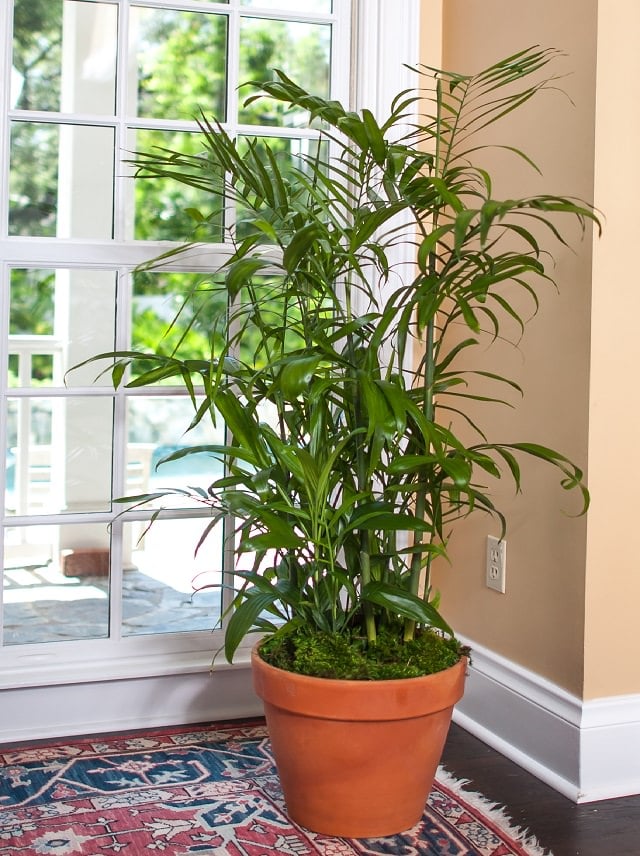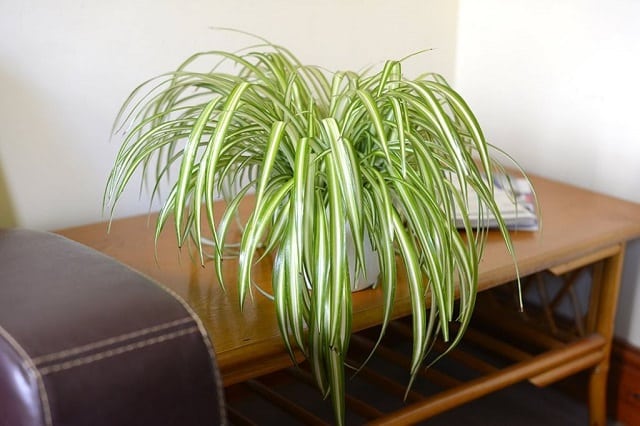Cope with stickiness and extra moisture in the air by growing plants that reduce humidity indoors. They work!
If excess moisture in your home can make everything sticky and skin clammy and the increase in humidity never let you feel better, planting these dehumidifying plants combined with other humidity reducing solutions can be a great idea. They’ll also clean your indoor air, helping you in having a restful sleep.
1. Xerophytes
Xerophytes are the plants that can survive in deserts or ice, in low liquid water. They are known for their ability to live in harsh temperatures such as cacti and succulents. Aloes, euphorbias, some palms, and plants from Yucca family are good examples. These plants usually have hairy or waxy leaves and thick stems, with their help they can catch and keep water from the air and reduce humidity.
2. Epiphytes
Epiphytes are plants that grow harmlessly on other plants or objects. As they get moisture and nutrients from the air around them, they are definitely the kinds of plants that reduce humidity indoors. Mosses, many ferns, cacti, bromeliads such as silver vase plant, orchids are the example.
3. Tillandsia
As far as dehumidifying houseplants are concerned, tillandsia practically takes the cake. This tropical genus of ‘Air Plants‘ is the part of bromeliads family and is known to survive without soil and root systems by simply taking nutrients and moisture from the air itself. Its showy thin scales aid in the entry of water while preventing its escape. Also, the silvery hue of the scales helps the plant stay cool by reflecting back a portion of the sunlight that falls on it.
A Few Other Houseplants that Reduce Humidity Indoors
4. Peace Lily
A beautiful foliage plant with serene white spathes, peace lily is known to absorb moisture from the surrounding environment through its leaves despite being watered. Plus it is adept at removing traces of alcohol, acetone, benzene and other air pollutants. Since it requires only a small amount of sunlight to thrive, peace lily is easy to grow indoors. Medium to low sunlight, watering, and an occasional dose of fertilizer are enough to keep this plant fresh and blooming.
Also Read: Plants that Grow Without Sunlight
5. Boston Fern
A superb air dehumidifier, the Boston fern is an exotic plant with decorative leaves and slender arching fronds. It is also an effective air purifier plant and eliminates pesky air pollutants such as formaldehyde, xylene, and benzene, thereby precluding the onset of allergies and infections. Boston ferns thrive best in warm and humid climate and prefer daytime temperatures, moist soil, and indirect sunlight. If you live in a colder region where the air dries out pretty quick, you may want to mist the plant occasionally to keep it healthy.
6. English Ivy
English Ivy is an evergreen perennial that is super easy to grow prized for its ability to cleanse the air of airborne molds and common air pollutants like formaldehyde. It is also known to scavenge off the moisture from the air to meet its own physiological needs. Another advantage of this plant is that it can be grown in hanging planters too and placed at a higher elevation, maybe close to the ceiling, where it can absorb humidity as it rises. It performs best in cool temperatures.
7. Reed Palm
A hardy houseplant with mystical-looking foliage, the reed palm is one of those houseplants that offer more benefits with little to no maintenance. Unlike other palms, this one survives best in dim, indirect light, which makes it ideal for indoor growing. However, when placed in a well-lit spot, it can grow tall and even survive prolonged exposure to the sun. Another interesting fact about reed palm is that it gets most of its water from the air, rather than from the soil. By filtering the moisture out of the air, it helps reducing humidity levels in your home and prevents the colonization of pathogens and allergens.
8. Spider Plant
Spider plant has gained popularity as an indoor plant for being impressive-looking and low-maintenance. The gracefully arching leaves makes it look elegant, but that’s not all it offers. What makes it stand out is its ability to survive in low light and neglect. It also removes up to 90% of harmful formaldehyde in the air that surrounds it.












Do you have any data on the quantity of moisture removed from the air by different plantsa/
Please help me! I keep buying English Ivy, re-pot it at home in a larger container than from nursery. I put good soil, with perlite in it and do not pack tightly. Every time I do this, and hang in a northwest window (or any window w/o direct sun), it croaks, aka DIES within a week or so.
It is late spring, the air is not humid (yet) and what am I doing wrong? The pot is a beautiful plastic with purple rim, and the is is my third try. Help Ivy get her act together!
90% of the problem was that it was in a double pot, accidentally, thinking it was a single pot, so the plant was not draining or drying out at all. Still, the second ivy I’ve put in the trash for it’s “delicacy” even in a northeast window.
The idea that indoor plants can reduce the humidity in a room is a bunch of bunk without any scientific data whatsoever. Some of the other benefits of indoor plants are true but this article is based on nothing less than horse manure. If you have any scientific data to back this up prove it.
Do you have any data to support your claim here? Truly, I am trying to understand. I work in the field for one of the largest interior landscape companies in the world and I don’t agree with this article. I also found your article through a group’s page….a group of interior landscape professionals and we all disagree with this article. Sorry.
Kathy & E Gal, there are no false claims here. No buncha bunk. Indeed plants do absorb water out of the air, and therefore ‘dehumidify.’ There have also been many studies finding the pollutant filtering properties of many plants’ respiration process. Now do they dehumidify to the point of what some would call comfortable? Or will one plant filter your entire house? No. Did this article make those claims? No. Read what the words say, not what you want them to.
The article says say right at the beginning ‘combined with other humidity reducing solutions’. Regardless, I can’t believe how nasty and rude adults are to each other. It’s not even like we are taking about something that is that important in the broad scheme of things. It’s no surprise our entire society is collapsing.